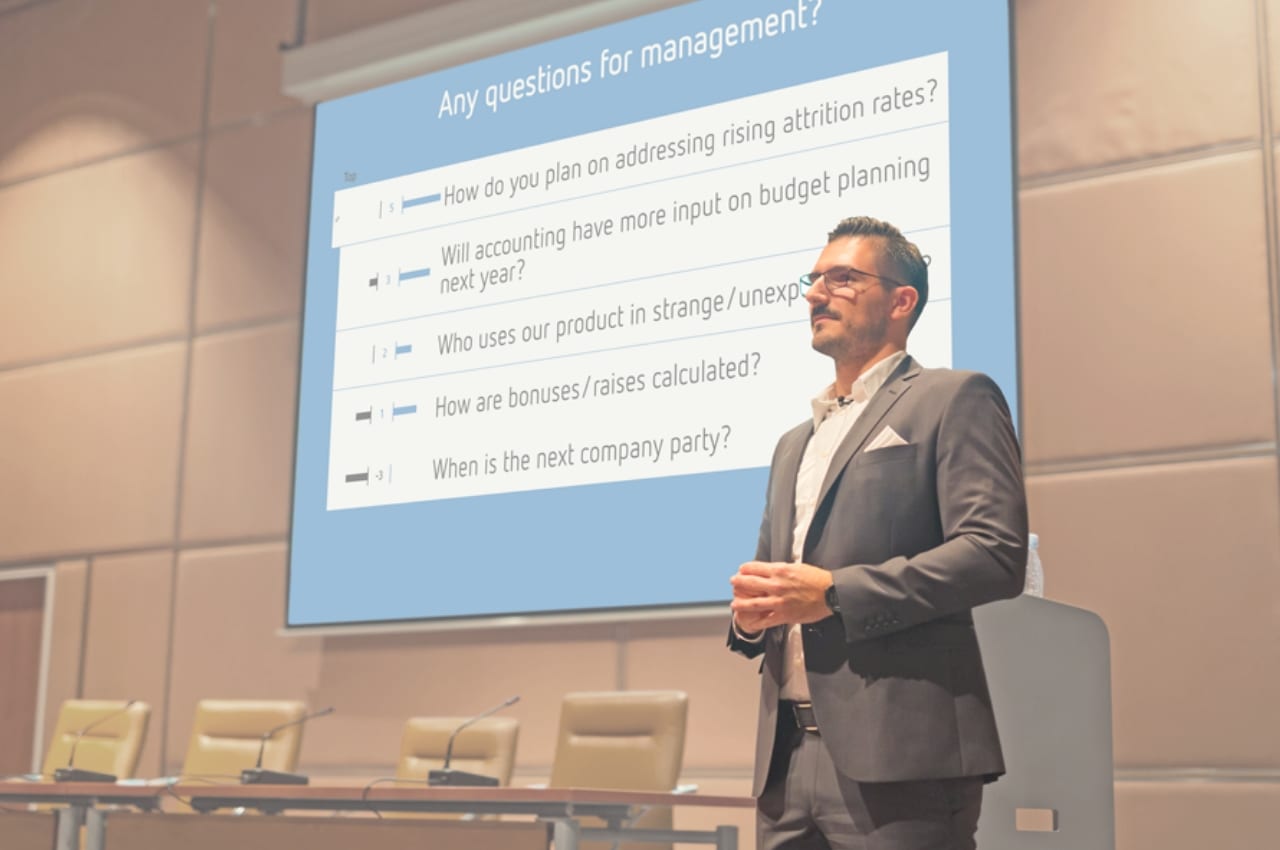Better Q&A Start by Ditching the Questions? Slide

An effective PowerPoint presentation is complementary. It enhances what the speaker is saying by summarizing information, giving additional details, or visualizing what’s being discussed.
Ask yourself, which of those does a “Thank you!” or “Questions?” slide accomplish? It’s a missed opportunity. There are better alternatives that drive home the key points of your presentation and help the audience retain some of what you said days, and weeks, later.
You can still thank the audience. You can still ask for questions. But your PowerPoint should be doing something else, something complementary. Here are some suggestions to help you replace that questions slide with a more effective alternative.
I’ve included those suggestions below. But first: a quick primer on the science of an effective presentation.
How do you make your ending memorable?
Dr. Carmen Simon, cognitive neuroscientist and founder of Memzy, has written extensively about how to structure an effective, memorable presentation.
“Ultimately, recall is impacted by inconsistency or a deviation from the pattern,” wrote Simon. “An audience will remember the ending more if it is highly inconsistent with the rest of the presentation. This is because distinctiveness can only be judged relative to the number of items you have shown an audience.”
An effective ending is distinct from the rest of your presentation.
It’s a break from the norm. If you’ve been lecturing for an hour, close on a video. If you’ve been hosting an open forum, close on a personal anecdote. Get creative.
Fielding questions is also an excellent choice. However, an open mic and a questions slide is going to be too intimidating for some audience members. In the time it normally takes you to hear from one person, you could be collecting insights from the entire audience. Here’s how:
Read more: How to structure a presentation your audience will remember
Replace the questions slide with a live poll
An audience response system such as Poll Everywhere lets the audience submit questions simultaneously from the privacy of their phones. Feedback is instant and appears live in PowerPoint for everyone to see.
Poll Everywhere also lets respondents upvote questions from their peers. Questions that receive more votes move to the top of the list, so you know exactly what the audience needs to hear.
Instead of a Q&A, you could also take this opportunity to surprise the audience with a pop quiz. A few multiple-choice questions covering what you discussed forces them to become active participants instead of passive listeners. This mental shift will help improve retention.
If the audience does poorly on a particular question, you can take the opportunity to quickly recap that section of your presentation. If they ace the whole thing, then your work is done.
Read more: How to ask great Q&A questions at any event
Transform your final slide into a resource
Don’t forget that the end of your presentation needs to be different from what came before. If you already used an audience response system throughout your presentation, its effectiveness at the end will be diminished. If that’s the case, here’s one last piece of advice: make your final slide a shareable resource.
On your final slide, list out a summary of key takeaways from your presentation as a bulleted list.
Consider adding some personal contact information if people have follow-up questions. At a minimum, include resources where people can learn more.
Suggest that the audience snap a photo of the slide using their phones, or even print out physical copies and distribute them during the Q&A. The audience will appreciate it more than a “Thank you!” slide.
“Ultimately, recall is impacted by inconsistency or a deviation from the pattern. An audience will remember the ending more if it is highly inconsistent with the rest of the presentation.”
– Dr. Carmen Simon